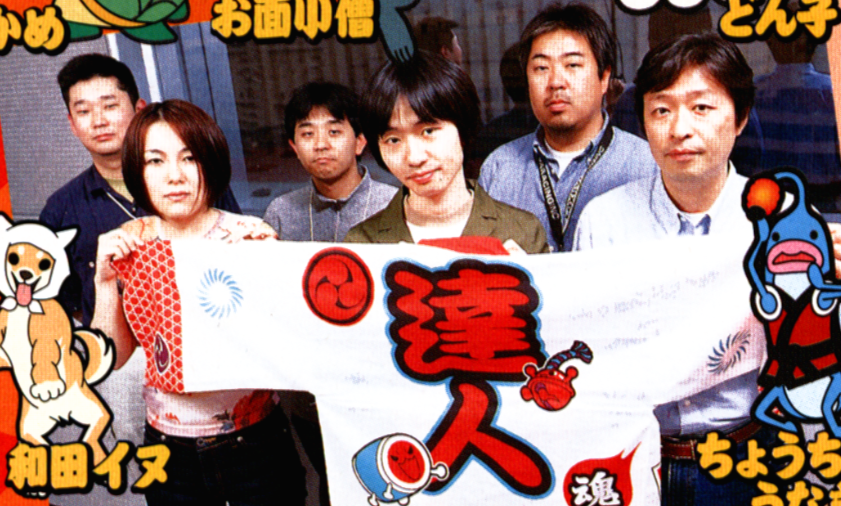Published in Arcadia Issue 13 (June 1, 2001). Interview with the development staff of the recently-released Taiko no Tatsujin from Namco.
With the force of an an economic revival in our current recession, the much-lauded Taiko no Tatsujin became an immediate smash hit as soon as it left Namco’s doors. The elite team at Namco who brought us Taiko no Tatsujin have taken time out of their busy schedules to allow us to hold an interview, don!
Participants
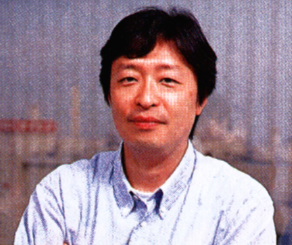
Masuya Oishi
Manufacturing review, planning, schedule checking. His previous works include Soulcalibur, Mr. Driller, and too many more to count. His current stress is the result of a desperate scheduling delay.
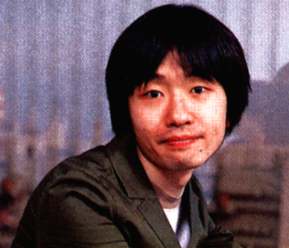
Ken Nakadate
Direction laborer. In charge of all planning. Representative work is Kaiun Quiz: Koufuku no Tabibito. His current stress is being exposed to hazardous areas 70% of his everyday life.
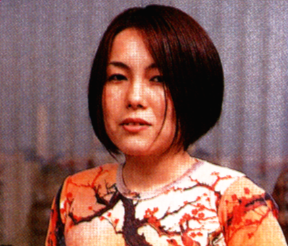
Yukiko Yoko
In charge of all character design and UI design. Previous works include Outfoxies and Dancing Eyes, among others. Her current stress is whether her designs will be accepted.
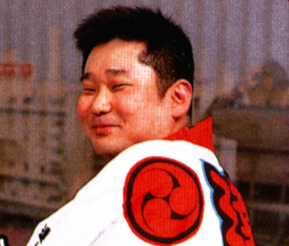
Tatsuhiko Mochizuki
Taiko no Tatsujin’s chivalrous programmer. Previous works include Namco Classic Collection and Gynotai, among others. His current stress is how to relieve noise complaints he’s receiving.
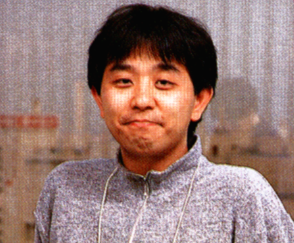
Kouji Takahashi
In charge of everything related to the game’s electronics. Gator Panic, Tako-Ika Panic, Balance Try, etc. Current stress is his compulsion to start over upon completing something.
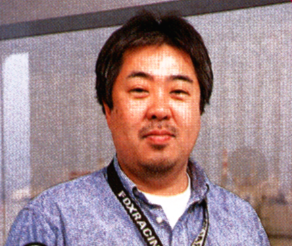
Tsutomu Kiyono
Hardward-related direction. Previous works include Kuuki Hayaire Senshuken, Jumping Groove, etc. Current stress is software not being completed at the time of mass-production.
The road to Tatsujin
– For starters, please tell us about the circumstances leading to the creation of Taiko no Tatsujin, don.
Oishi: When we started the planning for Taiko no Tatsujin, it was actually a completely different type of product. It was something like a machine with switches on the top, bottom, left, and right, in which you would dance para para while hitting the switches. But no matter what we tried, we couldn’t make it fun to play.
Mochizuki: Then, when we searched further for the answer to “well, what is fun to hit?”, we ended up thinking “what about a wadaiko? Does that sound fun?”.
Oishi: Though we also had an idea for a game that uses the sound of a rotating analog lever… In any case, this was my first time working on a large-sized cabinet1, so until the “taiko” motif was decided on, it was a series of trial-and-error.
1 Oishi-san is a big deal in gaming, having helped bring countless classics into the world. He’s had a hand in retro titles like Yokai Dochuki (which he worked as a designer on) and Ordyne, all the way up to current games like Soulcalibur and Mr. Driller.
Nakadate: From an image standpoint, everyone knows what a taiko is, but one of the reasons we went with a waidaiko theme was actually because we figured not many people have gotten to hit one before.
Mochizuki: I think that the very act of hitting something appeals to our basic human instincts. I’m pretty sure that if you go to a game center and see a taiko that you’re free to hit, virtually everyone will subconsciously want to hit it (laughs).
Oishi: That’s because when we were location testing, kids would actually come up to the cab and start beating the taiko without actually putting any money into the game.
– The title “Taiko no Tatsujin” has the word “Tatsujin” in it, so we wanted to ask if the game was intended to be a part of the Tatsujin series2 from the start, don.
2 A game series developed with the core philosophy of “games anyone can easily enjoy”. Other games officially recognized as part of the series are “Ryouri no Tatsujin” and “Tairyou Taiko 337 Byoushi“.
Oishi: That talk began midway through development. We figured that the game had a heavy Japanese theme, so it would make sense for it to be part of the Tatsujin series. At first we called it stuff like “Taiko no Meijin”.
Mochizuki: But we ended up deciding that if it was taiko, it should be “Tatsujin” (laughs).
Nakadate: The concept behind the Tatsujin series in the first place was “easy to control games that the whole family can enjoy”. Looking at it from that angle, it only seemed appropriate to grant Taiko no Tatsujin the title of a Tatsujin series games.

Until the taiko design was complete
– From the feel of the cabinet to the design of the in-game UI, there’s a certain kind of quality that permeates the whole game. Tell us about the struggle to create the game’s aesthetic, don.
Kiyono: Every small detail of the cab was tough, but the biggest struggle would have to be the taiko itself. The mounting location, and the issue of how much strength it could take… it was a road of suffering right up until the end… ugh (distant stare).
Mochizuki: Though we would’ve liked to have built a whole wooden tower frame if we had the budget (laughs).
Oishi: At first, the taiko was mounted at the top of the cab, and players would have to look up to hit it, but… that was exhausting (laughs). And kids wouldn’t be able to hit it.
Kiyono: In the end we settled on the current shape and position, but the idea of using half of a taiko also came up. But the game had “taiko” in the name, so we kept using a full wadaiko.
Takahashi: Though all that led to various troubles for the electrical system in setting up the taiko interface (laughs). Oh well, if the next Taiko no Tatsujin game includes Dragon Saber3 music, all is forgiven…
3 A vertical-scrolling shooting game released by Namco in 1991. The game’s music is miraculously perfect. [An arrangement of Dragon Saber’s Underwater City theme was added in 2006’s Taiko no Tatsujin 9]
Mochizuki: Oh, really? (laughs)
– Go ahead and tell us about the concept you had in mind when crafting the general aesthetic, don.
Nakadate: From the very beginning, our target was Japanese-style design with a pop art twist. Something like “Japanesque pop”.
Yoko: Having a pop-style that even women in their 20s would be able to get into was critical for me. I carefully researched the patterns on the cabinet and game screen as well as the colors4 in pursuit of that “pop”.
4 The colors used in Taiko no Tatsujin were given very Gund*m Color-like names, such as “Tatsujin Red” and “Tatsujin Blue”.
Nakadate: When you think about “taiko”, there’s also the image of fundoshi-clad crew cut dudes waving bachi by the roaring Japanese sea. But we already did that with Truck Kyousoukyoku5 (laughs). We wanted to go for something with a lively atmosphere, using a festival motif.
5 A strange game brought into the world last year by Namco and Metro. A driving game that perfectly conveys that “dudes by the Japanese sea” mood.
Oishi: What really brought the aesthetic of the game together was the creation of Yoko’s Don Wada. I think Don Wada’s existence gave us the opportunity to appeal to a broad age range. Like, he’s not too masculine, and he’s also okay for kids.
– In general, how did you end up creating the mascot character Don Wada, don?
Yoko: At first he was a minigame character. Originally, Taiko no Tatsujin had two modes: performance and minigames. Don Wada would appear in the minigame mode.
Nakadate: The minigames were stuff like making Don Wada run.
Oishi: At the location test, people would mostly play performance mode rather than the minigames. So, we decided to focus on the performance mode and cut the minigames, with Don Wada being the only thing remaining from them. As a result, we sorta kept him around as a character who would come in handy later (laughs).
[The aforementioned minigames later appeared in the home version]
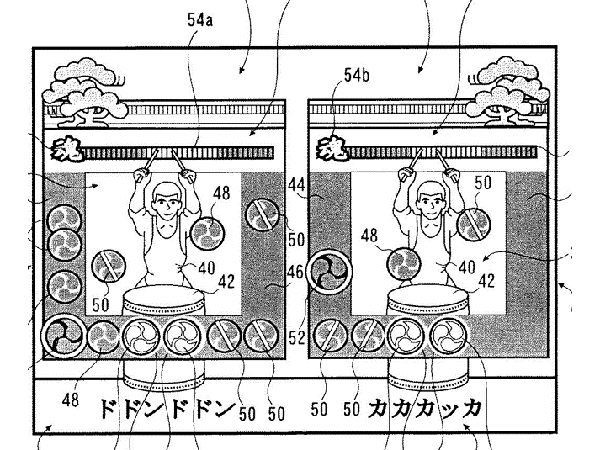
The mysteries of Tatsujin systems
– It sounds like Taiko no Tatsujin’s mechanics went through many twists and turns. Can you tell us about this, don?
Nakadate: Currently, notes come in from the right side of the screen and move left, but at first, notes would come from both sides towards the center, and you would need to pay attention to which side you hit with.
Kiyono: The taiko face still distinguishes between hits on the left side and right side, so this is a remnant of that mechanic.
Oishi: But it’s hard to see notes coming in from both the left and the right, and a more strict system for where to hit takes away from the exhilarating feeling inherent to the taiko. So, because we wanted to allow people to enjoy a dynamic play experience, we aimed for the most easy to understand, most simple UI and mechanics we could.
Yoko: You call it simple, but we ended up making the screen pretty busy to convey that festival vibe (laughs).
Mochizuki: We made Taiko no Tatsujin as a game that was less about clearing difficult songs, and more about enjoying the act of performing in time to music. With this in mind, we truly focused on keeping things basic.
As rhythm games have evolved, I think there are definitely people who have fallen through the cracks, who don’t necessarily want to play something too difficult. But they want to have fun performing… By all means, I want these kinds of people to play with the taiko.
Takahashi: The inputs are just “don” and “ka”, so it’s easy to understand.
Nakadate: I think the main reason we were able to make it so nice and basic is because the development team doesn’t really have any serious music game players (laughs).
Oishi: The branching charts also weren’t added as some kind of weird way to make the game more difficult. It’s a product of our desire to make the screen even more flashy.
Nakadate: We also made sure that the song selection generally included songs that everyone knows. We studied stuff like karaoke popularity charts.
Mochizuki: This is the first time I’m hearing about that (laughs).
Nakadate: We’re confident that the song lineup we’ve put together doesn’t leave anyone out. Including everything from Tankou Bushi to Morning Musume… that just about sums up Taiko no Tatsujin (laughs).
The original songs were added to fill in the genre gaps left by the existing songs.
Yoko: They added Mappy Ondo for me because I like Mappy’s music.
Mochizuki: I saw someone online somewhere say that we added Mappy Ondo to show respect for longtime Namco players, but really we just added it because we like it (laughs).
Nakadate: So you’ll just add whatever people suggest (laughs).
Takahashi: Then add Dragon Saber next time.
Mochizuki: Oh, now that you mention it, sorry for not including Knuckle Heads6 music like Arcadia-san had asked.
6 A fighting game released by Namco in 1993. The theme of one of the playable characters, “Takeshi Fujiooka” (there’s an accent on the “o”), has a perfect oriental mood that’s practically made for Taiko no Tatsujin. [Fujioka’s theme from Knuckle Heads was added to Taiko no Tatsujin 10 in 2007]
Nakadate: This is getting absurd (laughs).
Lastly, any final messages, don?
Oishi: If we get to work on a sequel, I want to keep working on the song selection, and make it the kind of game whose characters are recognized by everyone.
Kiyono: A Western music-only Taiko would also be novel, I think.
Takahashi: The hardware is all set, so as long as we can keep preserving the game’s simplicity. That and Dragon Saber (laughs).
Yoko: I hope “Don Wada” will be a name that everyone knows. If there’s a sequel, I want to keep improving the game’s pop-style.
Nakadate: It makes me happy to actually see people playing Taiko no Tatsujin at arcades. I’ll keep working hard to make Taiko something people can become closer to.
Mochizuki: It took a while, but luckily we were able to come up with something that casual players can enjoy. I’m thinking that as long as the game doesn’t evolve too quickly, we can carry that forward into the next entry.
Thank you for your time, don!

